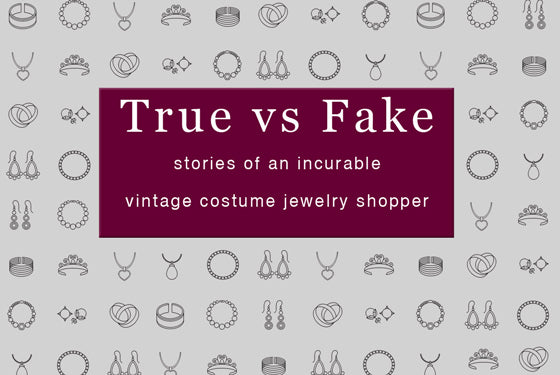
Vintage Sterling Silver Jewelry
Several years ago, I bought this chicklet necklace with alternating citrine- and brown-topaz-glass stones. Although the seller had described the piece as sterling and priced it accordingly, it wasn’t. The clasp was marked as such, but the frames around the stones and connecting links were clearly base metal. I kept the necklace for the boutique because I really liked its two-tone colors, but I felt ripped off.
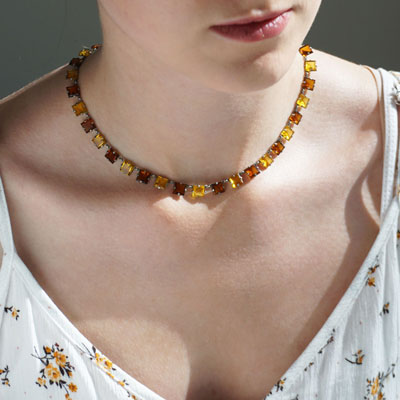
Where Is the Sterling Mark?
Vintage Necklaces
Let’s first look at two similar necklaces from the boutique that illustrate this point.
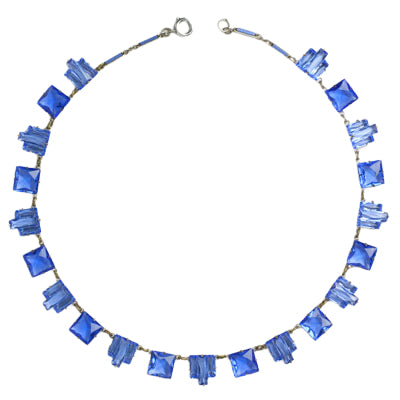 |
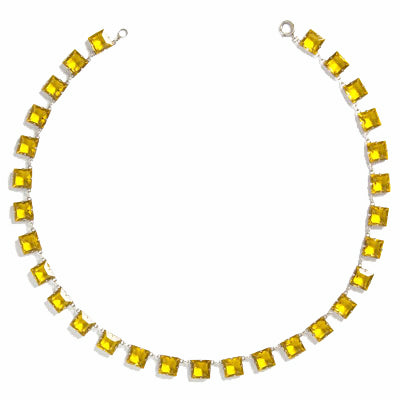 |
|
Close-up of Blue Necklace Back |
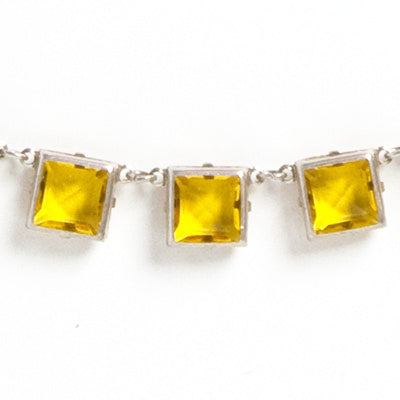 Close-up of Yellow Necklace Back |
In both cases, the clasps are stamped “sterling”. The blue necklace is not marked elsewhere on the piece. The close-up of the back shows that the metal is silver-tone (perhaps silver plate) over brass. On the right, the frames look like sterling – in fact, one of them is stamped. So the yellow chicklet necklace is sterling silver, but the blue one isn’t.
Any type of clasp or fastener that is removable (i.e., not an integral part of the jewel’s construction) can be made of one type of metal while the rest of the piece is something else. This principle applies to spring-ring, box, screw-barrel, and fish-hook clasps found on both necklaces and bracelets.
Vintage Earrings
Sterling marks on earring fasteners can be just as misleading as those on other types of jewelry. If only the fastener (screw-back, ear clip, or post or lever-back for pierced ears) is marked as sterling, the metal in the body of the piece may not be. Here are two examples of Art Deco pendant earrings from the boutique.
The blue bead earrings on the left have a sterling mark on the lever back for pierced ears, which replaced the original unmarked screw-back fasteners. I can’t assume that the unmarked cap on the bottom and the chain connecting the two balls are also sterling. On the right, these onyx earrings by Wachenheimer Brothers are stamped "sterling" on the frames that hold the large stones at the bottom.
When Am I Unsure?
Although metal can be tested to determine if it’s sterling, the process involves scratching the piece and using nitric acid, something I don’t want to do. Therefore, I have to rely on markings and my research. Here are two pairs of 1940s ear clips from the boutique that are puzzling.
The crescent-shaped ear clips on the left by Ralph De Rosa are part of his 1949 “Dearest” series, which included brooches. The name is derived from the fact that the first letter of each faux gemstone spells the word. The ear clips are marked “sterling”, but the body of each earring has only the maker’s name. The metal appears to be rhodium-plated, but I can’t be sure of what’s underneath. While my research identified the name of the series and its date, the information did not describe the components.
The aquamarine earrings on the right by Pennino Brothers are also stamped “sterling” on only the ear clip. My research revealed that the curvy petals are similar to the maker’s “Sunburst” brooches from 1947. The stone settings are like those in their “Bulrush” brooch and earrings from the same year. Both of these designs were made in gold-plated (vermeil) sterling silver. Although I think these earrings are also sterling, I can’t be sure.
What Do Sterling Marks Mean?
Because pure silver is too soft for jewelry making, the metal is combined with an alloy to make it more durable. The percentage of pure silver used in a piece determines whether it is sterling. The minimum standard worldwide is 92.5%. That’s why some jewels are marked “925” instead of the word “Sterling” or its abbreviation (“Ster.”). Some pieces (usually European) are marked “935”, which is a higher standard of purity (or "fineness").
Jewelry marks often misinterpreted as sterling include “800”, “900” and “Silver”. I’ve learned a lot about sterling marks over the years. Silver is a helpful article on the Antique Jewelry University website.
Why Does It Matter?
Sterling is more than a reputation. It is a precious metal that is more expensive and more durable than base metals. Sterling silver can be cleaned and repaired, when necessary. Base metals can be damaged when soldering (a heat process) is used. While I do not judge the quality of a vintage costume jewel solely on its metal, I do factor it into the price of a piece. And whether I’m buying or selling, I want to be clear about what’s being offered.
The New Series: True vs. Fake
To help you become a more informed buyer, I’ve started this series of stories about my mistakes and what I’ve learned from them. Read the first installment: True vs. Fake: I Was Duped. And subscribe to my blog, so you won’t miss the next!



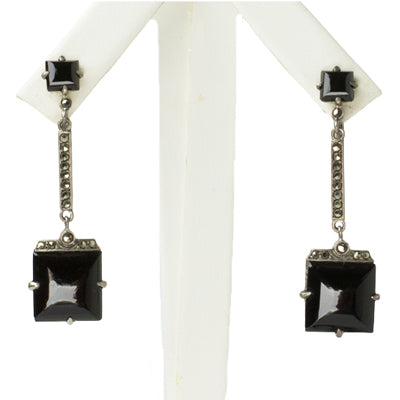
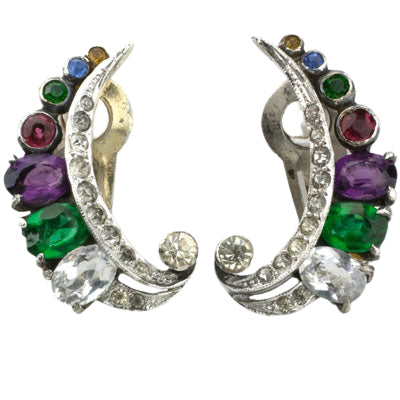
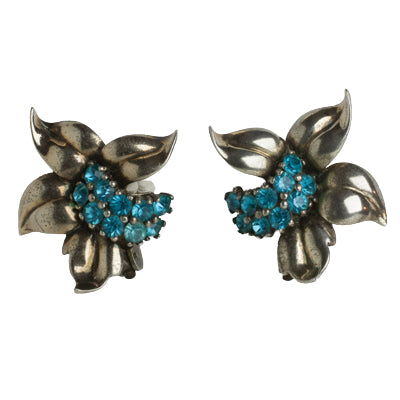
3 comments
Thanks for letting me know!
Thank you so much for sharing your expertise on identifying sterling silver antique jewelry. Antiquing has been a hobby of mine and my husband’s for some time and he has always been my go-to “expert” when I am unsure about a necklace, brooch or other piece of jewelry but some times he is unavailable to assist me. After reading this article, I feel much more comfortable determining whether an item is actually sterling silver, silver-plated or inaccurately stamped. Thank you again for taking the time to share this invaluable information with everyone!
Thank you so much for sharing your expertise on identifying sterling silver antique jewelry. Antiquing has been a hobby of mine and my husband’s for some time and he has always been my go-to “expert” when I am unsure about a necklace, brooch or other piece of jewelry but some times he is unavailable to assist me. After reading this article, I feel much more comfortable determining whether an item is actually sterling silver, silver-plated or inaccurately stamped. Thank you again for taking the time to share this invaluable information with everyone!
Leave a comment